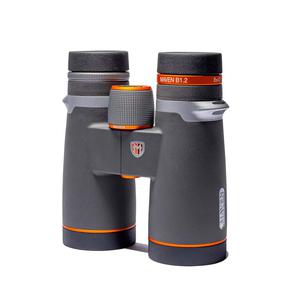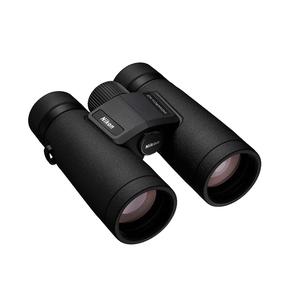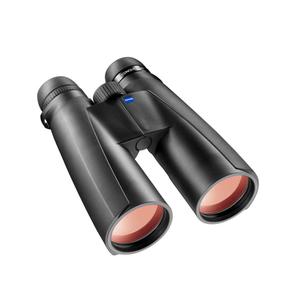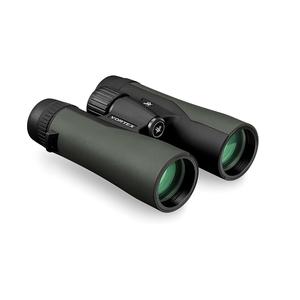Prism Types in Binoculars and Monoculars
So, Binoculars and monoculars, those remarkable tools that bring distant sights right before our eyes, are more than just a pair of lenses. At their heart lie prisms – the unsung heroes that magnify and correct images, making them a joy to behold. In this exploration, we delve into the realms of Porro and Roof prisms, each unique in its own right, to help you find the perfect optical companion.
in short: Porro prisms, found in binoculars and monoculars, have an offset design that provides a wide field of view and bright images but are bulkier. Roof prisms have a straight, aligned design, making them compact and durable, but they can be more expensive and slightly less bright than Porro prisms.
- Exploring the Classics: Porro Prisms
- The Modern Contender: Roof Prisms
- Judging Optical Quality
- Pros and Cons of Porro and Roof prisms
- Making the Right Choice
Exploring the Classics: Porro Prisms

Named after the Italian innovator Ignazio Porro, these prisms have graced optical devices since the 19th century. Their hallmark? An intriguing offset design where the eyepieces and objective lenses don't line up. The eyepieces are snuggled closer together while the objective lenses sprawl further apart, creating a Z-shaped journey for light within the device.
Porro prisms, with their four reflective surfaces, not only erect the image but also magnify it, all while ensuring a rich field of view. This design trait translates into images that are bright, detailed, and full of depth. What's more, these prisms are fairly straightforward and economical to produce, making them a wallet-friendly option.
Yet, perfection eludes even the Porro prisms. Their bulkier, weightier nature might deter the traveler seeking light luggage. They are also more vulnerable to alignment issues and damage. Add to that the challenge of waterproofing, and Porro prisms might seem a bit less appealing to the adventure enthusiast.
Within the Porro family, you'll find the standard and reverse types. The standard variant features closer eyepieces and wider-set objective lenses, while the reverse Porro flips this arrangement. Though more compact, the reverse Porro sacrifices some light transmission and field of view.
The Modern Contender: Roof Prisms

As we step into the 20th century, Roof prisms emerge as a sophisticated alternative. Their defining feature is the straight-through design aligning the eyepieces with the objective lenses. This alignment makes them more streamlined, lightweight, and user-friendly – a boon for those on the go.
Roof prisms split and recombine the light cone, ensuring the image remains upright. Their streamlined design makes them more durable and less prone to misalignment. They also excel in weather resistance, a feature outdoor enthusiasts will appreciate.
However, these advanced prisms come with their own set of complexities. Manufacturing them is more costly, impacting their price point. They also tend to have a narrower field of view and may suffer from phase shift – a misalignment of the light halves that can degrade image quality.
To counter this, manufacturers apply special coatings, though this adds to the cost. In case you're in search of standout binocular models, take a look at our top 4 best binoculars for 2024:
- High-End Performance at Affordable Price
- Ideal for Hunting, Birding, and Wildlife Viewing
- Enhanced Low-Light Performance
- Tack-Sharp Edge-to-Edge Vision with Deep Field
- Compact and Lightweight with Improved Light Transmission
- ED Glass Lenses Minimize Distortion
- Ideal for Birding and Wildlife Observation
- Rubber-Armored, Non-Slip Grip Design
- Waterproof and Fog-Proof for Reliable Performance
- Turn-and-Slide Rubber Eyecups for Eyeglass Compatibility
- HD Lens System for Vivid Imaging
- Best for Birdwatching and Nature Observation
- LotuTec Coatings for Scratch Protection
- Conveniently Placed Focusing Wheel for Easy Use
- Perfect for Stalking Game and Rough Terrain
- Exceptional Clarity and Color Fidelity
- Resistant to Water and Fog
- Eyecups Adjustable for Eyeglass Wearers
- Secure, Non-Slip Rubber Armor
- Includes GlassPak Harness for Easy Carrying
Judging Optical Quality
Several factors influence the quality of these prisms. The type of glass used, for instance, plays a crucial role. BK-7 glass, being of lower quality, tends to produce images that may lack in brightness and color fidelity. On the other hand, BAK-4 glass, with its higher refractive index, delivers brighter and more color-accurate images.
Prism shapes also matter. Triangular prisms, typically used in Roof prisms, are more efficient in bending light. Rectangular prisms, common in Porro designs, offer a more compact fit.
Coatings are another crucial aspect. Dielectric coatings boost light reflection, while phase coatings address the phase shift in Roof prisms. Silver coatings, though less effective than dielectric ones, enhance image brightness and contrast.
Pros and Cons of Porro and Roof prisms
This table summarizing the pros and cons of Porro and Roof prisms:
| Aspect | Porro Prisms | Roof Prisms |
|---|---|---|
| Design | Offset design with non-aligned eyepieces and objective lenses. | Straight-through design with aligned eyepieces and objective lenses. |
| Image Quality | Generally brighter images with a wide field of view and good depth perception. | Good image quality, but may suffer from phase shift leading to slightly less sharp images without special coatings. |
| Weight/Size | Bulkier and heavier due to their design. | More compact and lightweight, making them easier to handle and carry. |
| Durability | More prone to misalignment and damage. Less easy to waterproof and seal. | Generally more durable, resistant to misalignment, and easier to waterproof and seal. |
| Cost | Usually less expensive to manufacture and therefore more affordable. | Typically more expensive due to complex manufacturing processes. |
| Variants | Comes in standard and reverse types, offering some flexibility in design. | Less variation in design, primarily differing in quality of glass and coatings used. |
| Suitability | Ideal for casual use, bird watching, and activities where size and weight are less of a concern. | Better suited for outdoor activities, travel, and situations where portability and durability are important. |
This table provides a broad comparison between the two types of prisms, but it's important to note that individual models of binoculars and monoculars may have specific features or enhancements that affect their performance.
Making the Right Choice

Selecting between Porro and Roof prisms depends on your specific needs and preferences:
- If your priority is a cost-effective, straightforward device offering vibrant and deep images, Porro prisms are a solid choice;
- For those valuing portability and durability, especially in challenging conditions, Roof prisms are the way to go;
- For the discerning user seeking top-notch image quality, Roof prisms equipped with BAK-4 glass and advanced coatings are ideal;
- If versatility and ergonomic design are your criteria, Porro prisms with their diverse configurations will serve you well.
Conclusion
In the end, the choice between Porro and Roof prisms boils down to personal preference and use case. The best way to decide? Experience them both. Try out different models, and you might be amazed at how a prism can transform your viewing experience. Whether it's for bird watching, stargazing, or simply admiring nature's vistas, the right optical tool can make all the difference.
You may also like:




